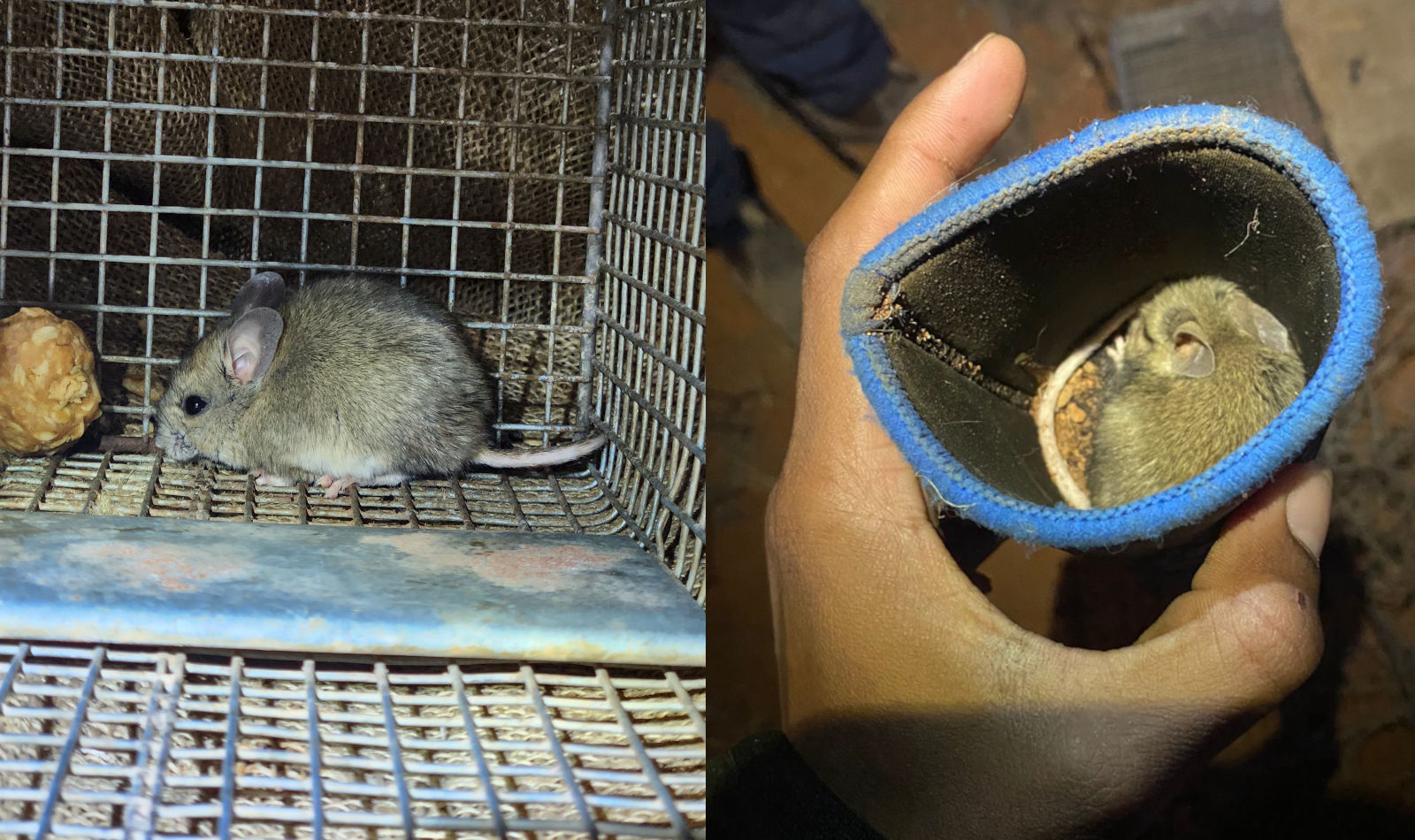Plains Mouse
This small native rodent saved us some work by reintroducing itself to Arid Recovery in 2006

Plains mice are a threatened species, and are very rare outside protected areas
The plains mouse (Pseudomys australis) was first recorded in the Arid Recovery Reserve in 2006. Plains mice numbers have increased and are now frequently recorded during trapping and spotlighting surveys. The habitat of the plains mouse has likely increased due to the release of rabbit calicivirus between 1995 and 2009.
WHAT HAS ARID RECOVERY LEARNT?
Plains mice do not need to rely on one habitat for survival
We previously thought that plains mice needed cracking clay depressions in gibber plains to survive. However, since first being recorded in the reserve in the absence of feral cats, foxes, rabbits and livestock, the plains mouse has spread into all types of habitat, including stony swales and dunes. It is now clear that its apparent reliance on gibber plains is a refugial effect and it can occupy a variety of habitats.
Stubby holders protect plains mice during cage trapping
We use peanut butter and oat balls to attract larger mammals like bettongs and bilbies. Not surprisingly, plains mice are drawn to this bait. In our surveys for reintroduced mammals, plains mice are frequently discovered in cage traps. To keep them warm overnight and shield them from potential encounters with burrowing bettongs in the cage, Arid Recovery includes stubby holders inside the traps.
 A plains mouse caught in a cage trap during a reintroduced mammal monitoring (left), and a plains mouse keeping warm inside a stubby holder (right)
A plains mouse caught in a cage trap during a reintroduced mammal monitoring (left), and a plains mouse keeping warm inside a stubby holder (right)
Plains mice are known for being quite vocal and produce a wide range of sounds, such as distress calls, chirping, and squeals
SPECIES PROFILE
Range and abundance: The plains mouse was once widespread in the arid and semi-arid regions of Australia. Since European settlement, its range has declined by 50 to 90%. It is now restricted to the gibber (stone-covered) plains of northern South Australia and southern Northern Terriotry.
Shelter: The plains mouse builds shallow, complex burrows which are dug into cracks in the gibber plain or at the base of shrubs. In burrows dug beneath shrubs, the soil is softer and complex warrens can be built up to 2m². Nest chambers are built with dried grass. During the breeding season, burrows often contain one male and several females, while outside of breeding season burrows can be occupied by up to 20 mice. The mice leave tracks that connect their burrows and lead off to their feeding areas.
Feeding: Plains mice mainly eat grass seeds, but also eat other plant material, insects and small reptiles. The plains mouse is able to survive without drinking – obtaining all its water from food.
Breeding: Breeding occurs primarily after rainfall when there is an increase in food availability. As conditions deteriorate, populations can decline rapidly. Litter sizes are usually three to four, with weaning taking place 28 days after birth.
Threats: The major threat to the plains mouse is habitat degradation due to trampling and grazing from cattle and sheep. Predation from feral cats and foxes have also contributed to their decline, with plains mice frequently turning up in the stomach contents of cats shot in the region. The plains mouse is now listed nationally as vulnerable.